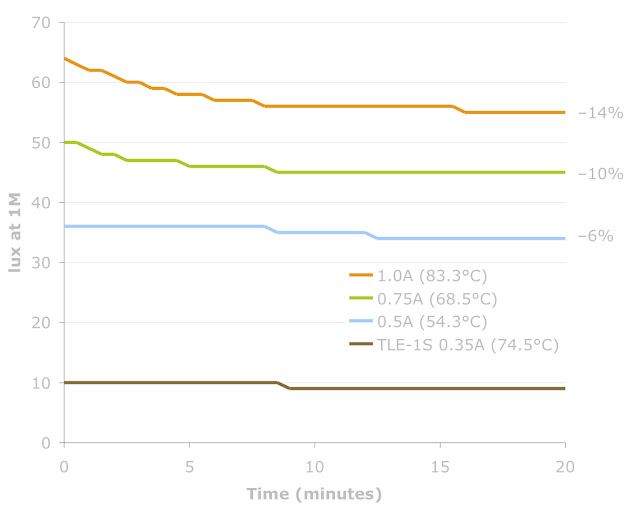 |
| Revised LED bulb pillar heat sink design |
I soldered the Cree XP-G LED (still tricky even with a hot air rework station), ran the wires and used a thermal epoxy to stick it into an E10/MES Edison threaded bulb base:
| E10/MES Edison LED bulb with copper heat sink |
This can now be threaded into any flashlight or vintage bike lamp that takes a miniature screw bulb (albeit in need of a separate driver circuit). I first tried it out in a Sturmey Archer head lamp:
| Flimsy bulb holder of SA headlight |
Unfortunately, the SA lamp has a rather low quality and flimsy way of mounting the bulb in the reflector. The actual bulb holder is a thin piece of stamped metal that doesn't hold the bulb straight. This is then pressed in and held by friction in the base of the reflector, where the positive bulb end makes contact with a springy metal tab:
Ok, so I've given up on fitting a screw bulb into the original holder of the SA head lamp. I think I can design something that can be pressed (and maybe epoxied) into the reflector. It will be simpler, won't rely on the flaky original contacts and will probably have better thermal properties.
So, how does the bulb perform in a decent quality lamp holder? For this, I turned to the trusty and well-designed bulb holder of a Luxor lamp. Conveniently (and unlike SA lamps), both head and tail lights use the same well-made bulb holder:
| Luxor makes a better bulb holder than Sturmey Archer |
| LED bulb ready for testing! Brown wire is thermocouple. |
Now that I've automated data logging of wheel speed, LED current and light output, I should probably just go ahead and make an Arduino-based thermocouple to log temperature as well. However, that hasn't happened yet, so all I did was log lux data over 20 minutes, and make note of the steady state end temperature.
One requirement of my LED bulb is that it outperform commercially available E10 LED bulbs, so I pitted my bulb against the (I think) now discontinued TerraLUX MiniStar1 TLE-1S (the flanged version still seems to be available). It is rated at 50 lumens and is the same bulb that I used in my original (and doomed) Sturmey Archer LED retrofit. I also tried out the 35 lumen E10-WHP, but it put out a paltry 6 lux at 1 meter, so I didn't bother logging the data. The TLE-1S is rated 1W with its own built in driver. Given 3.4V, it sucked up 0.35A, so about 1.2W.
 |
| The defending champion: TLE-1S |
Here are the results:
 |
| Lux data (no secondary optics) collected every 30 seconds over twenty minutes. |
Great, the TLE-1S gets blown out of the water by my LED bulb. It also got surprisingly hot (74.5°C!), although its output didn't drop much as a consequence. Now, to be fair, I didn't collect data for my bulb at 0.35A, but that's because I have no intention of running it at 0.35A. Ultimately, it will get any one of the three currents tested: 0.5-0.6A from direct dynamo output or 0.75-1A from a dynohub magnet upgrade or buck driver. Still, speaking as a former scientist, this experiment was not properly controlled...
Surprisingly, the revised LED bulb performance is better than my original design; although the initial output is about 3-5 lux lower across the board (this could be due to LED-to-LED variability as well as the fact that I burned off the LED dome of my first prototype!), the thermal performance is better, resulting in lower steady state temperatures and, consequently, less light drop. This is probably because the bulb base is in contact with the fairly bulky Luxor bulb holder, which is increasing the surface area by at least two fold. Although the contact area between the bulb base and holder is small it seems to be enough to improve thermal performance.
Overall, I'm pleased with the result. This bulb will work at high currents in a variety of vintage tail lamps and, at the very least, in the Luxor head lamp. Unfortunately, the bulb holders of both the Sturmey Archer head lamp and the Radios No. 18 are too flimsy and will require individualized solutions. I think I can design a simple replacement LED/holder combination that won't require any modification to the lamp.
One problem is that I still think the LED is a little high in the parabola of the Luxor reflector. Not sure how much more length I can shave off my copper pillar while leaving enough room for mounting and wire routing holes...

No comments:
Post a Comment